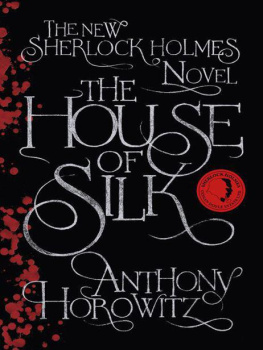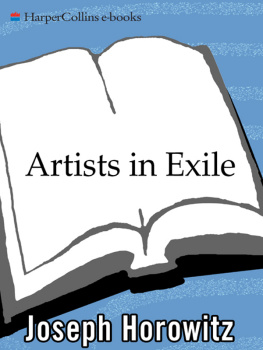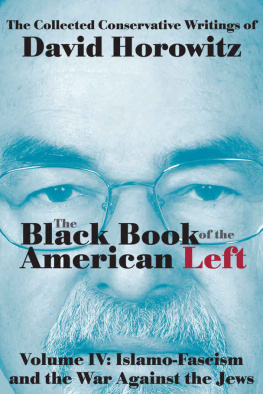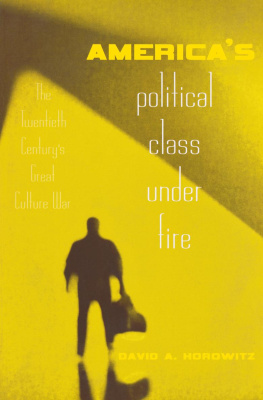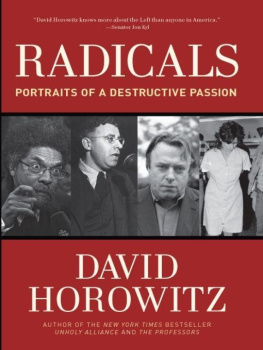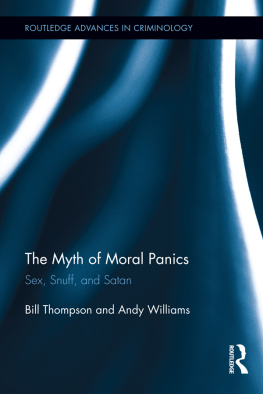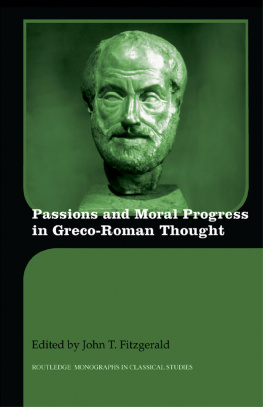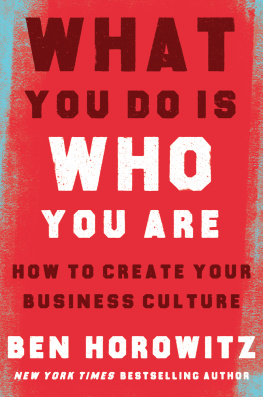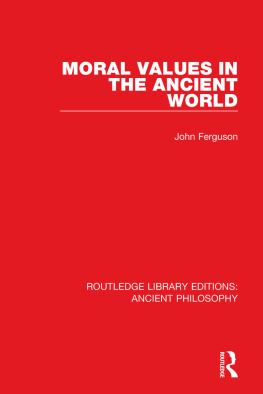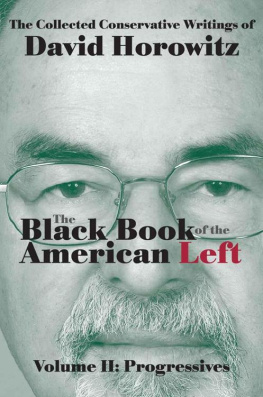
ROTH FAMILY FOUNDATION
Music in America Imprint
Michael P. Roth
and Sukey Garcetti
have endowed this
imprint to honor the
memory of their parents,
Julia and Harry Roth,
whose deep love of music
they wish to share
with others.
The publisher gratefully acknowledges the generous support of the Music in America Endowment Fund of the University of California Press Foundation, which was established by a major gift from Sukey and Gil Garcetti, Michael P. Roth, and the Roth Family Foundation.
Moral Fire
ALSO BY JOSEPH HOROWITZ
Conversations with Arrau (1982)
Understanding Toscanini: How He Became an American Culture-God and Helped Create a New Audience for Old Music (1987)
The Ivory Trade: Music and the Business of Music at the Van Cliburn International Piano Competition (1990)
Wagner Nights: An American History (1994)
The Post-Classical Predicament: Essays on Music and Society (1995)
Dvok in America: In Search of the New World (for young readers, 2003)
Classical Music in America: A History (2005)
Artists in Exile: How Refugees from Twentieth Century War and Revolution Transformed the American Performing Arts (2008)
Moral Fire
Musical Portraits from Americas Fin de Sicle
Joseph Horowitz

University of California Press, one of the most distinguished university presses in the United States, enriches lives around the world by advancing scholarship in the humanities, social sciences, and natural sciences. Its activities are supported by the UC Press Foundation and by philanthropic contributions from individuals and institutions. For more information, visit www.ucpress.edu .
University of California Press
Berkeley and Los Angeles, California
University of California Press, Ltd.
London, England
2012 by Joseph Horowitz
Library of Congress Cataloging-in-Publication Data
Horowitz, Joseph, 1948.
Moral fire : musical portraits from Americas fin de sicle / Joseph Horowitz.
p. cm.
Includes index.
ISBN 978-0-520-26744-2 (cloth : alk. paper)
1. MusicUnited States19th centuryHistory and criticism. 2. MusicUnited States20th centuryHistory and criticism. 3. Music patronageUnited StatesHistory19th century. 4. Music patronageUnited StatesHistory20th century. 5. Musical criticismUnited StatesHistory19th century. 6. Musical criticismUnited StatesHistory20th century. 7. Higginson, Henry Lee, 18341919. 8. Krehbiel, Henry Edward, 18541923. 9. Holloway, Laura C. (Laura Carter), 18481930. 10. Ives, Charles, 18741954. I. Title.
ML200.4.H67 2012
780.973'9034dc23 2011045448
Manufactured in the United States of America
20 19 18 17 16 15 14 13 12
10 9 8 7 6 5 4 3 2 1
In keeping with a commitment to support environmentally responsible and sustainable printing practices, UC Press has printed this book on Rolland Enviro100, a 100 percent postconsumer fiber paper that is FSC certified, deinked, processed chlorine-free, and manufactured with renewable biogas energy. It is acid-free and EcoLogo certified.
For Agnes, Bernie, and Maggie
Contents
Music and moral passionRevisionist portraitureFraming fin de sicle
Civil War serviceA second home in ViennaAnnouncing the Boston Symphony OrchestraJohn Sullivan Dwight and musical upliftBuilding Symphony HallChoosing a conductorMasculine business versus feminine artKarl Muck and the Great War
Race and the Worlds Columbian ExpositionThe making of a music criticAnton Seidl and Wagnerism made wholesomeAntonn Dvok and Negro melodiesAn activist American school of criticismSalome and Mahler debaclesGerman-Americans and the Great WarArt as uplift
The Ladies of the White HouseA tangled pastFrom theosophy to WagnerismMusical missionary workEarnest, manly womenReforming the ShakersA life in limbo
Charles and HarmonyA life sagaThe business of life insuranceTranscendentalism in musicThe symphonic idealStream of consciousnessIvess nervous complexThe residual Progressive
Boston decadentsA fin-de-sicle templateMark Twain and hybriditySocial control and sacralizationWorld War I poisons Romantic uplift
Illustrations
Introduction
Fully twenty years ago, I decided that the most dynamic decade for classical music in the United States was the 1890sa finding that contradicted conventional wisdom both about American music and about the Gilded Age. The latter term, roughly designating the period between the Civil War and 1900, originates with Mark Twains first novel, co-written with Charles Dudley Warner in 1873: The Gilded Age: A Tale of To-Day. Its genesis was a conversation in which the two writers expressed discontent with the state of American fiction. They also shared their discontent with the state of American democracy. The result is a long and tangled tale of Washington politics. Hypocrisy and bribery, poverty and violence are major themes. Readers of the book easily recognized Senator Abner Dilworthy as Kansass Senator Samuel Pomeroy, a watchdog for temperance and the Sunday School, who was caught offering cash for a nominating voteand yet was cleared by a committee of Senate colleagues. The Crdit Mobilier scandal of 1872, in which a fraudulent company was found to have siphoned federal railroad money, was equally a fresh national memory. To many, the harsh iconography of The Gilded Age seemed just. And the label, with its pejorative associations, stuck.
I am far from being the only present-day writer for whom Mark Twains notion of a Gilded Age mischaracterizes a time and place he himself embodied. To be sure, historians need to periodize and label; to
Its general usage, that is, originates not with The Gilded Age: A Tale of To-Day, but with the Young Americans movement after World War I. This quest for a usable past devoured the parental generation in favor of venerable antebellum ancestors and a vital present. In the 1930s, such significant historians as Charles and Mary Beard, and Vernon Parrington, as well as such influential popularizers as Matthew Josephson, embedded the rubric and imagery of Gilded Age America.
In retrospect, this genealogy tells more about interwar intellectual life than about the period in question. Brooks and Mumford, especially, were writers of irresistible panache. Their exhilarating polemics successfully instigated new thinking: they cast a shadow on the past in order to brighten the present. But their books remain polemics whose pertinence and plausibility have long faded. Just as the Young Americans needed to rediscover Hawthorne, Emerson, and Thoreau, others would subsequently make startling discoveries amid the ostensible rubbish of turn-of-the-century America.
My own such discoveries include the momentous contributions of Henry Higginson, Henry Krehbiel, and Laura Langford. Charles Ives was of course discovered by others, but not long enough ago. Seeking candidates from the Oedipal generation of Brooks and Mumford, Serge Koussevitzkys Boston Symphony Orchestra searched in vain for a Great American Symphony during the interwar decades. Ivess Second Symphony, an American masterpiece from 19001902, only came to light in 1951. By then, Brooks and Mumford, their purposes served, had both recanted. As early as 1931, Mumford was singling out such figures as Albert Pinkham Ryder, Thomas Eakins, and Louis Sullivan en route to a revisionist perspective. Brooksin
Next page

